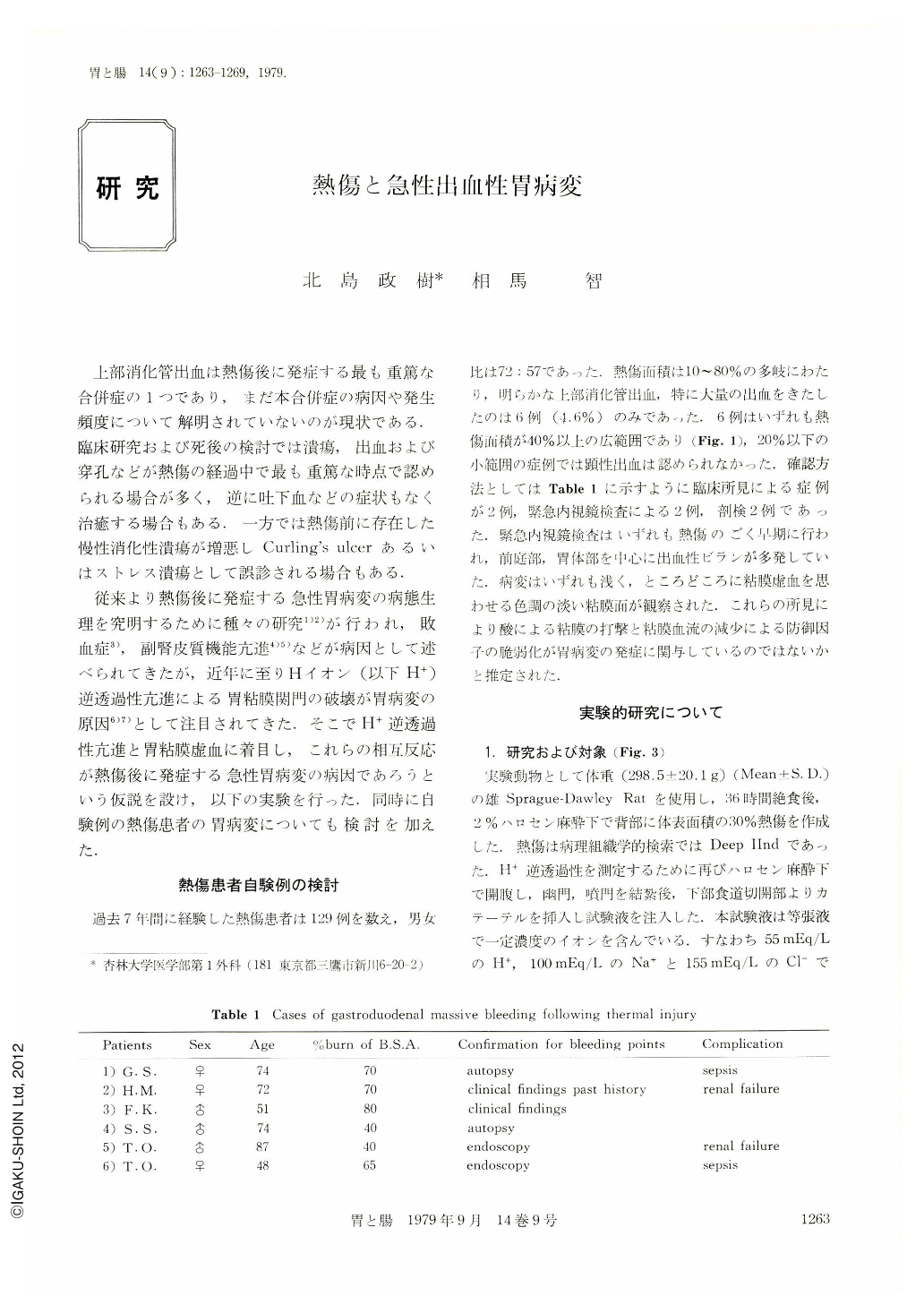Japanese
English
- 有料閲覧
- Abstract 文献概要
- 1ページ目 Look Inside
上部消化管出血は熱傷後に発症する最も重篤な合併症の1つであり,まだ本合併症の病因や発生頻度について解明されていないのが現状である.臨床研究および死後の検討では潰瘍,出血および穿孔などが熱傷の経過中で最も重篤な時点で認められる場合が多く,逆に吐下血などの症状もなく治癒する場合もある.一方では熱傷前に存在した慢性消化性潰瘍が増悪しCurling's ulcerあるいはストレス潰瘍として誤診される場合もある.
従来より熱傷後に発症する急性胃病変の病態生理を究明するために種々の研究1)2)が行われ,敗血症3),副腎皮質機能亢進4)5)などが病因として述べられてきたが,近年に至りHイオン(以下H+)逆透過性亢進による胃粘膜関門の破壊が胃病変の原因6)7)として注目されてきた.そこでH+逆透過性亢進と胃粘膜虚血に着目し,これらの相互反応が熱傷後に発症する急性胃病変の病因であろうという仮説を設け,以下の実験を行った.同時に自験例の熱傷患者の胃病変についても検討を加えた.
Acute ulceration of the upper G-I tract is a most serious complication after burn. Numerous etiologies and pathogenetic mechanisms have been proposed to explain this entity, and each has been found lacking as a completely satisfactory single explanation.
Of 129 burn patients treated at our clinics during the years 1971 through 1978, 6 patients (5%) with more than 40% burn of BSA had an episode of massive upper gastrointestinal bleeding. This group of ulcer patients included 3 males and 3 females. Four of six patients with ulcer died of sepsis and renal failure. In order to investigate the pathogenetic factor of acute gastric ulceration after burn, we hypothesized that H+ back diffusion and ischemic change of gastric mucosa. due to the opening of arteriovenous shunting channels played a causative role in development of mucosal lesions.
Rats subjected to a third degree burn of 30% of the BSA were investigated at times varying from immediately to 72 hours after burns and compared to sham-burn controls. H+, Na+, K+, Cl-, and protein concentration were determined. Gross inspection of mucosal lesions was divided into four categories in incidence and severity. Gross inspection revealed that there was a high incidence of mucosal lesions during the first few hours after burn. H+back diffusion occurred in early period and their was statistically significant difference in the magnitude of loss of H+ between control and 2 and 5 hours post burn value (p<0.01). In microvascular studies, the diameter of arterio-venous shunting channels in animals studied at 2 and 5 hours post burn were greater than in controls. On the basis of these data, the reduction in mucosal blood flow is the first step in the sequence of events that leads to the formation of gastric lesions. Ischemic change of gastric mucosa is likely to make Weak the protective factor of gastric mucosa and to render it more susceptible to damage by H+.

Copyright © 1979, Igaku-Shoin Ltd. All rights reserved.


